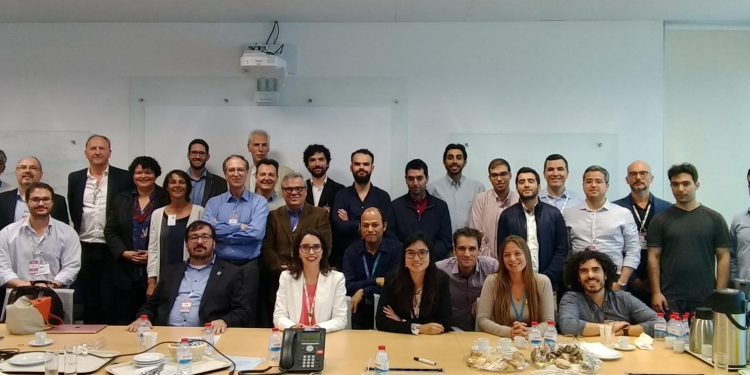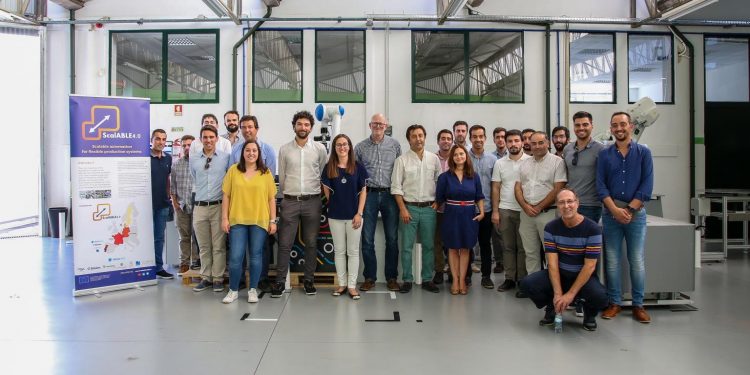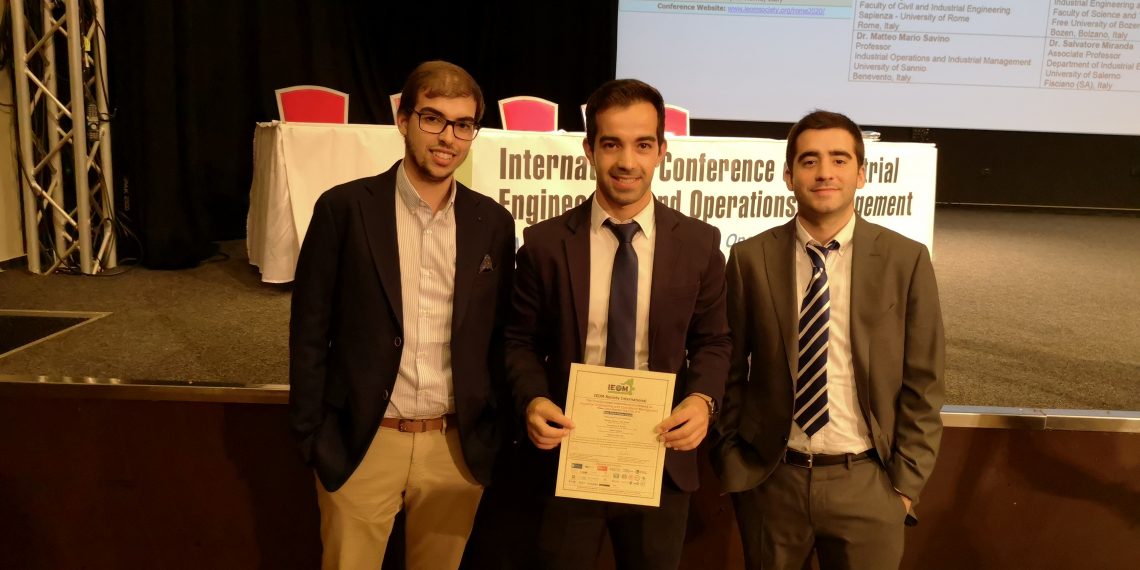«The Centre for Enterprise Systems Engineering (CESE) nominates the team composed of João Basto, Narciso Caldas and Romão Santos for “The Incredibles” section, for the exceptional work they developed last month in the simulation area. Within the European projects ScalABLE 4.0 and FASTEN, they have successfully developed simulation models applied to real industrial contexts, also being directly involved in their integration with other software tools, such as optimisation software and IIoT platforms.
In addition to this, they have played a key role in strategic activities in the simulation area at CESE, namely in training new people, exploring and testing new tools and monitoring master theses, always performing these functions with great professionalism».
Coordination of CESE.
How was the teamwork under the European projects ScalABLE 4.0 and FASTEN, namely in the simulation models?
In the FASTEN project, we worked with Embraer and ThyssenKrupp (TSK) to develop solutions for production systems of aircraft wings and supply chains with additive manufacturing, respectively. In this sense, two optimisation-simulation models were developed. In the case of Embraer, the solution was to create a software capable of calculating the optimal distribution of human operators through the several workstations of its production line, then using simulation to assess the impact of reallocating these same operators. On the other hand, at TSK, we first developed a mathematical optimisation model in order to calculate the optimal way to distribute 3D printers throughout its supply chain. Then, the simulation is used to assess the stochasticity of travelling times and the impact on the chain performance indicators. In addition to this, in this project our software is integrated with an IoT platform in order to obtain data and to check results in real time.

In the ScalABLE 4.0 project, we worked with PSA and Simoldes Plásticos (SP) in the development of solutions for engine production systems and plastic components for the automotive industry, respectively. In the case of PSA, an optimisation-simulation model was designed, in which an optimisation algorithm is used to allocate robotic resources to the several workstations and a simulation model to present the future vision of its production line. In SP, the model was built to analyse changes on the factory’s layout and to verify the impact this will have on the line performance indicators. In addition to this, the insertion of robotic technology at the end of the multiproduct belt is also considered, so that the trade-off between investment/return is noticeable.

Also in this project, the solution obtained contains features that allow a vertical integration from the factory floor to planning systems such as MES. For this purpose, the simulation model has the ability to read the current status of the production line, automatically starting each race with WIP (Work In Progress). This type of functionality can be very useful in the future, for example, to predict the impact of a failure of a robotic resource on the line performance indicators and to test maintenance execution scenarios to reduce their impact on the line.
What was the intervention of the team in training new people, exploring and testing new tools and monitoring master theses?
Our work methodology is to increase our knowledge by exploring new technologies with potential and training new people so that there is no loss of knowledge and that there is a follow-up of our work in a natural way. In this sense, we also monitor master theses to ensure that new people are trained in our area while exploring topics that we believe are of strategic interest to CESE, such as connecting a simulation model to Reinforcement Learning algorithms.
How do you comment this nomination?
First of all, we would like to thank CESE’s coordination for the nomination and work opportunities that we have been given, as well as the freedom to make decisions on future developments in our area. We would also like to highlight the importance of the joint work between CESE and the Centre for Robotics and Intelligent Systems (CRIIS), present in both projects, which has provided excellent conditions for the success of these projects. Finally, we would like to thank our colleagues from CESE for their support and good working environment.




 News, current topics, curiosities and so much more about INESC TEC and its community!
News, current topics, curiosities and so much more about INESC TEC and its community!